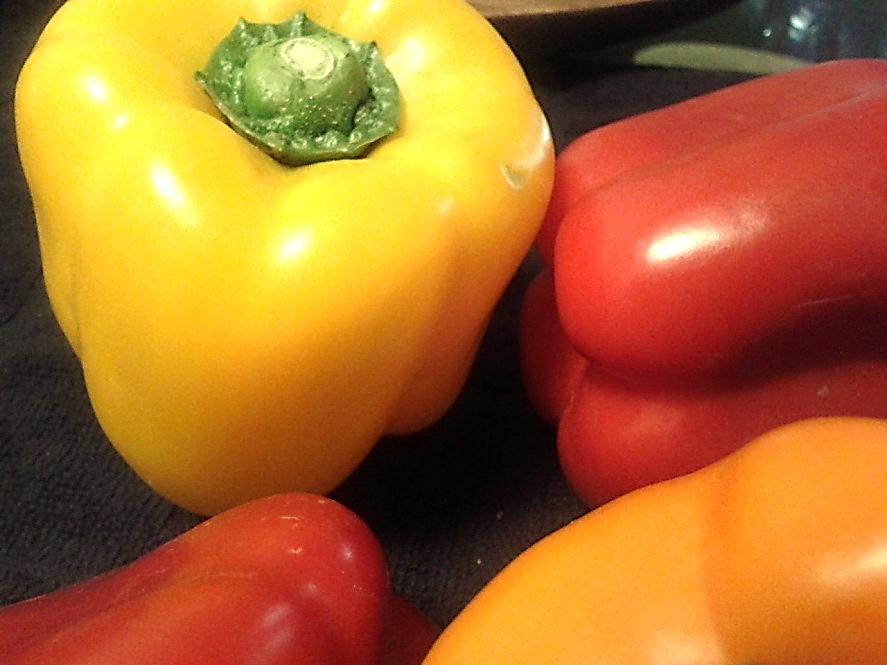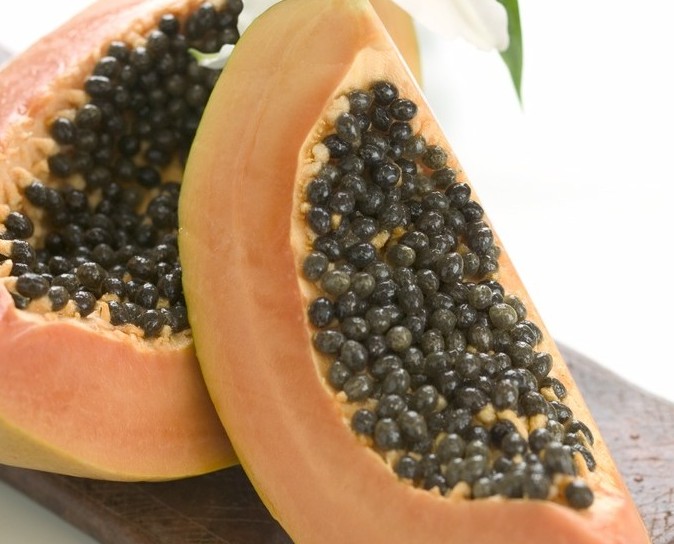 Did you know that animals have the ability to produce Vitamin C in their body? It’s actually their livers that produce it. This is amazing! But what happened to us humans? Well, we got left out of the genetic coding when it came to making our own Vitamin C, so we need to rely on getting Vitamin C through our diet. Find out why Vitamin C is so important and what foods you can find it in. You’ll want to read this article to find out which food has the highest amount of Vitamin C. And no, it’s not an orange!
Did you know that animals have the ability to produce Vitamin C in their body? It’s actually their livers that produce it. This is amazing! But what happened to us humans? Well, we got left out of the genetic coding when it came to making our own Vitamin C, so we need to rely on getting Vitamin C through our diet. Find out why Vitamin C is so important and what foods you can find it in. You’ll want to read this article to find out which food has the highest amount of Vitamin C. And no, it’s not an orange!
We’re only ONE enzyme away from making our own Vitamin C!
Our bodies are so amazing on so many levels but for whatever reason, animals were blessed with all three enzymes needed to make Vitamin C from sugar (also known as glucose) but humans are missing the third. This third enzyme needed to make Vitamin C in the liver from glucose is called – wait for it – L-gulonolactone oxidase. Although we don’t have L-gulonolactone oxidase to make Vitamin C, we most certainly can enjoy it through our food. In fact, most of nature’s most delicious fruits and vegetables contain high amounts of Vitamin C!
What does Vitamin C do in the body?
Vitamin C, like many vitamins has many functions in the body. Just one look at the research on PubMed will show you how important Vitamin C is for our everyday functioning. Some of the key functions Vitamin C is actively involved in are:
- Making skin-sexy collagen
- Making an important enzyme that dissolves and scoots out the plaque in arteries
- Producing hormones from our adrenal glands
- Protection from viruses and bacteria
- Keeping our blood vessels strong and sturdy
- Making a crucial component in our red blood cells: hemoglobin
- Helping us absorb iron better
- Helping to control allergies and allergy symptoms
- Making Vitamin E reusable
- Making immune markers that eat up cancer cells and prevent cancer
- Stopping free radicals in their tracks and kicking them out of the body safely and quietly
Wow! For a little vitamin, Vitamin C is sure busy with lots of tasks in the body to keep us happy and our bodies working optimally.
Top 10 Foods Overflowing with Vitamin C
 Did you know that it takes about 20 oranges to get 1,000 mg of Vitamin C? You might want to invest in an organic orange tree. So who is the winner when it comes to the food richest in Vitamin C? They’re called acerola cherries. But they might be challenging to find, so here is a list of the top 10 Vitamin C rich foods to pick from in the meantime:
Did you know that it takes about 20 oranges to get 1,000 mg of Vitamin C? You might want to invest in an organic orange tree. So who is the winner when it comes to the food richest in Vitamin C? They’re called acerola cherries. But they might be challenging to find, so here is a list of the top 10 Vitamin C rich foods to pick from in the meantime:
.
- Papaya and Guava
- Bell peppers – orange, purple, red, yellow, green
- Berries – strawberries, blueberries, raspberries
- Broccoli
- Pineapple
- Brussels Sprouts
- Kiwi – pack a punch and eat these with strawberries!
- Cantaloupe
- Kale, mustard greens, watercress
- Oranges & grapefruits
BONUS: Chestnuts are also a great source of Vitamin C
What’s better: Food or Supplement?
Plant sources of Vitamin C also provide flavonoid ‘friends’, such as citrus bioflavonoids, hesperedin, rutin, proanthocyanidins (all fancy names for amazing rejuvenating and health-ifying molecules from nature). Therefore, getting Vitamin C from food is the best way to get it because all its “friends” are there to help! Some things aren’t as great when you try to take the easy way out and pop a pill. In the human body these flavonoid ‘friends’ of Vitamin C both support and enhance how Vitamin C is used in the body.
Besides scurvy, how do we know if we’re getting enough Vitamin C?
You eat your Vitamin C-rich fruits and vegetables, but how can you be sure you’re getting enough Vitamin C and really absorbing how much it says you will if you eat that whole pint of strawberries? Sometime’s you can’t be sure, and this is why the body is so amazing because it will show you! Check out these common signs that can show up when you’re low in Vitamin C:
- Bruise easily
- Nosebleeds
- When you brush your teeth, your gums bleed
- Inflammed and swollen gums
- Loose teeth
- Joint pain
- Puffy face
- Anemia
- Fragile bones
- Lack of endurance and feel tired easily
- Nail cuticles tear easily
- Losing a lot of hair
- Wounds heal slowly
- Get colds, flu’s and infections easily and often
If you have 3 or more of these signs, check in with your registered health care provider or registered holistic nutritionist to inquire more and pin-point if it’s really a Vitamin C deficiency. In the meantime, try increasing more of the Vitamin C rich foods listed above and practice bringing awareness to your sexy bod and what signs it’s trying to show you. Think twice about what your body is trying to tell you before you lather on the makeup!
Toss the cigarette!
Smoking is cool, right? NO!! Not only is smoking super bad for your health and your sexy bod, but it also eats up Vitamin C like crazy! People who smoke are especially at risk of being deficient in Vitamin C. Put it this way, each cigarette you smoke gobbles up about 25 mg of Vitamin C, a powerful antioxidant that you could be using to keep you healthy, keep cancer at bay, and most importantly, keep your skin looking young and glowing. Toss the cigarette! Smokers lose collagen elasticity faster than ice melts in a sauna! The most obvious sign is premature wrinkling. No one likes a “smoker’s face”, so kick the habit.
Do you show any signs of Vitamin C deficiency or know someone that might? Pass this article onto them using the Twitter and Facebook links. Awareness is key! Also, I’d love to hear where you get your Vitamin C and what your favorite Vitamin C-rich recipe is. Share it with our readers! I love connecting with other nutrition-minded readers and personally congratulate you for taking interest in your own health!
Sources:
“Canadian Nutrient File” 2010 . www.hc-sc.gc.ca/fn-an/nutrition/fiche-nutri-data/index-eng.php
Englard S, Seifter S. The biological functions of ascorbic acid. Ann Rev Nutr 1986;6:365-406. 1986.
Groff JL, Gropper SS, Hunt SM. Advanced Nutrition and Human Metabolism. West Publishing Company, New York, 1995. 1995.
Levine M. New concepts in biology and biochemistry of ascorbic acid. N Engl J Med 1986;314:892-902. 1986.
Levine M, Cantilena CC, Dhariwal KR. Determination of optimal vitamin C requirements in humans. Am J Clin Nutr 1995;62(suppl):1347S-1356S. 1995.
Subar A, Block G. Use of vitamin and mineral supplements. Am J Epidem 1990;132:1901-1011. 1990.


